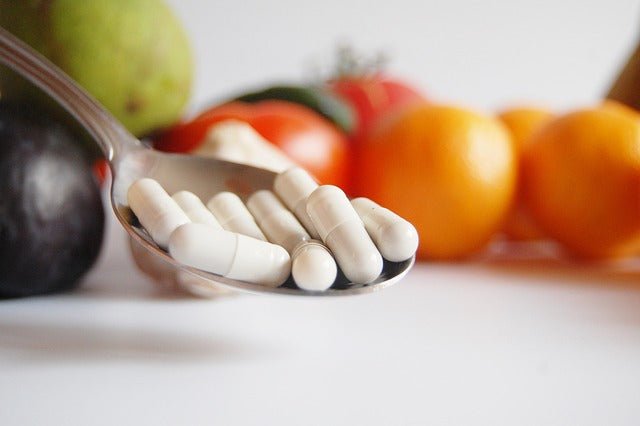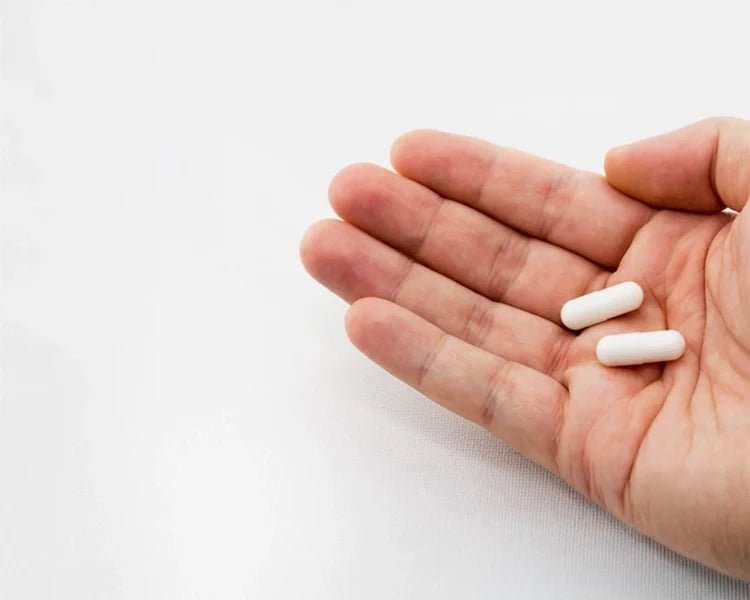Education
Are French fries and chips a health hazard?
Fried foods, especially those based on carbohydrate products, are an integral part of our diet. However, more and more research indicates that the frying process may produce acrylamide - a chemical compound that may pose a risk to human health. In this article, we will explore the health effects of acrylamide, the products in which it is present, and present medical sources that confirm this risk. Organizations such as the International Agency for Research on Cancer (IARC) and the World Health Organization (WHO) have classified acrylamide as a carcinogen. What is acrylamide? Acrylamide is a chemical compound produced in the process of thermal processing of carbohydrate products, such as potatoes, French fries, bread, as well as coffee and some cereal products. It is produced by the reaction of amino acids with sugars in the presence of high temperature. High concentrations of acrylamide can be found in burnt or heavily browned foods. Where is acrylamide found? Primarily in carbohydrate products subjected to high temperatures during frying or baking. Examples of products include: French fries, chips, potato pancakes, bread, cookies, roasted coffee. Acrylamide in research Scientific research and assessments by health institutions clearly emphasize the potential danger associated with acrylamide. If possible, it is worth limiting the consumption of heavily burnt or roasted foods to minimize the risk of exposure to this carcinogenic substance. Deep frying carbohydrate products, although providing culinary pleasure, leads to the formation of acrylamide, a substance harmful to human health. To reduce the risk, it is worth choosing less burnt and more delicately prepared foods. Marta Wcześniak Medical Sources and Research: EFSA (European Food Safety Authority). (2015). EFSA statement on the presence of acrylamide in food. Tareke, E., Rydberg, P., Karlsson, P., Eriksson, S., & Törnqvist, M. (2002). Acrylamide: a cooking carcinogen? National Cancer Institute. (2020). Acrylamide and Cancer Risk. National Toxicology Program. (2021). Report on Carcinogens, 15th Edition.
Learn moreWhen is it worth visiting a gastroenterologist?
Digestive health plays a key role in an individual's overall health. Our digestive system is not only responsible for the absorption of nutrients, but also plays an important role in the immune system and metabolism. However, its improper functioning can lead to a variety of health problems. Therefore, understanding the importance of digestive health and being aware of signals that may indicate the need to consult a gastroenterologist are extremely important for maintaining full health and well-being. Symptoms that may indicate the need to visit a gastroenterologist are usually related to gastrointestinal problems and can be diverse. Among them stand out: Abdominal pain, which may occur in various places and have a different nature (dull, stabbing, cramping). If the pain persists for a long time or occurs regularly, it may be a sign that there is a problem in the digestive system that requires evaluation by a specialist. Heartburn, i.e. burning or burning sensation in the esophagus and chest area. Its frequent occurrence may indicate gastroesophageal reflux disease, i.e. the reflux of stomach contents into the esophagus, leading to damage to the mucous membrane. Recurrent damage and inflammation predispose to cancer processes, therefore faster diagnosis and initiation of treatment are associated with a better prognosis. Bloating, nausea, vomiting, diarrhea or constipation may indicate various conditions such as irritable bowel syndrome, inflammatory bowel disease, intestinal infections or other digestive disorders. Sudden and unintentional weight loss. If you noticeably lose weight despite maintaining a normal appetite and a healthy lifestyle, this may be a reason to consult a gastroenterologist. Weight loss can be caused by various digestive disorders, such as inflammatory bowel disease, celiac disease, colon cancer or other serious disorders, but cancer can also be the cause. Changes in stool consistency may be an important signal of health problems other than cancer. If continuous diarrhea or constipation is observed, as well as changes in the color, consistency or appearance of the stool, consultation with a gastroenterologist is recommended. This may suggest not cancer but problems such as irritable bowel syndrome, Crohn's disease, ulcerative colitis or other diseases that require diagnosis in a doctor's office. Prevalence of cancer of the digestive system in the family. Separate recommendations for such patients are currently in force and are still being developed. These most often include suggestions for accelerated tests detecting early signals of these diseases and performing an extended panel of genetic tests. Therefore, the presence of cancer or autoimmune diseases in the family should prompt other relatives to take appropriate preventive measures and monitor their health. Environmental factors such as diet, lifestyle, stress factors and infections also play an important role in the occurrence of digestive system cancers. Eating habits and lifestyles may be similar within families, contributing to a similar environment that may promote the development of these conditions. Regular examinations and practicing healthy eating and lifestyle habits can help prevent or detect these diseases early. ATTENTION! If any symptoms occur, it is extremely important not to delay visiting a gastroenterologist. Early recognition and treatment of serious digestive problems, including cancer, can be crucial to continuing to lead a healthy life. Adam Trzciński
Learn moreNeeds in cancer patients - how to communicate them?
Communication regarding sexual needs in cancer patients is important, but unfortunately often overlooked. There is a false belief that, given the many challenges that cancer brings to a patient, sexuality is one of the last things that should be taken into account. This is absolutely not true - sexual needs are physiological needs and, just like any other, they require satisfaction. Of course, in the course of oncological disease, the possibilities of satisfying sexual needs may (but do not have to) be slightly modified, but this does not mean that the patient's sexual life ceases to be a source of fulfillment and satisfaction [1] . The treatment team has an important role in the process of caring for the well-being of an oncology patient. First of all, it is good practice to create a safe and trusted environment for the patient. The patient should feel comfortable and safe because this is what creates space to open conversations about sexual needs. It is important for the doctor to create an atmosphere of trust so that the patient knows that he is welcome to express his concerns and ask questions about sexuality. It is also good practice for the doctor to initiate a conversation about sexual needs. During such a conversation, it is worth assuring the patient that it is natural to have questions or concerns about the impact of the disease and oncological treatment on the sexual sphere. Open questions will certainly be helpful in such a conversation, as they will allow the patient to express his concerns or describe new experiences [2] . Proactivity is also important - listening carefully to the patient. This creates space to express your emotions, concerns and questions. At this point, it is worth paying attention to how important it is to listen carefully and show interest and understanding. The next step is to provide the patient with the necessary information about possible side effects of treatment, changes in sexual function, and available strategies and resources that can help deal with these challenges. In providing comprehensive care, the cooperation of the entire treatment team is crucial - many different fields of medicine may influence the sexual needs of oncology patients. Patient care can be provided not only by doctors and nurses, but also by psychologists and sexologists and psychotherapists. It is important to provide the patient with comprehensive care to be aware of problems arising during treatment, because this allows the patient to be referred to the appropriate specialist if necessary [3] . Your own work also plays an invaluable role - it is worth encouraging the patient to seek support - your doctor can inform you about available resources and support groups for cancer patients. Self-help groups can be valuable support in dealing with challenges in meeting sexual needs. Support can be received either through individual therapy, through group therapy sessions, or through use from extensive resources conveniently available electronically. Monika Kaszuba [1] Cichosz M., Wieczorek A. (2016), Sexual problems of cancer patients. Roczniki Psychology, 19(2), pp. 167-187 [2] Bębenek M., Czuba B., Pilewska-Kozak A., Wojtyna E. (2015). The impact of cancer on the sexual sphere. Przegląd Menopauzalny, 14(4), pp. 273-278 [3] Sobolewski M., (2018). Sexuality of patients with cancer of the reproductive organs - recommendations of the European Society of Oncology (ESMO) and other scientific societies. Ginekologia Polska, 89(2), pp. 103-107
Learn moreAnti-cancer diet – is there a miracle diet?
Society's growing awareness of the impact of lifestyle on health means that when we are at increased risk of cancer or when we experience oncological disease in our immediate environment, we look for a way to help protect ourselves against cancer. In addition to realizing the need for early diagnosis, one of the first associations is often a change in the current lifestyle, including eating habits. And rightly so, because according to data published by the World Health Organization, as many as 30-40% of all cancer cases could be avoided by giving up stimulants (nicotine, alcohol), improving the quality of the diet, increasing physical activity and maintaining a healthy weight. The Cancer Research Foundation (WCRF) also drew attention to dietary factors as important in cancer prevention, which devoted as many as 8 out of 10 main recommendations for cancer prevention to elements related to diet. Similarly, the World Cancer Report 2020 emphasizes that both the quantity (e.g. energy value, dietary fiber content) and the quality of consumed food products and meals are important in dietary cancer prevention. Is there one universal anti-cancer diet model? When looking for the answer to this question, many people get lost in the thicket of information available on the Internet or popular mass media. A large number of publications on this topic, repeated dietary myths and nutritional recommendations not supported by scientific evidence make it difficult to decide on the optimal diet. It also happens that you may come across nutritional recommendations that are not only unjustified, but may even pose a threat to the health of the people using them, such as in the case of highly restrictive diets that eliminate selected dietary macronutrients or significantly deviate from the principles of the so-called rational nutrition. Therefore, first of all, it should be clearly noted that an anti-cancer diet is a way of eating that, on the one hand, provides ingredients with a potential protective effect, and on the other - limits or even eliminates those with proven carcinogenic effects. This is a diet model that is not specific and limited only to cancer, but serves to improve the health of the general population, e.g., at the same time protects against the development of obesity, cardiovascular diseases, or type 2 diabetes. In contrast, highly individualized dietary assumptions support for oncological therapy (because there is no diet that in itself "cures cancer"), the main principles of the anti-cancer diet apply in many clinical situations, can be used by a wide range of recipients and, importantly, are safe. Principles of an anti-cancer diet in a nutshell The current state of scientific knowledge allows us to conclude that the most beneficial in this respect is a diet pattern based mainly on plant products, rich in whole grain products, non-starchy vegetables, fruits and legumes. Plant products are the main source of substances with anti-carcinogenic properties and reducing the risk of recurrence - dietary fiber, vitamins and minerals, and bioactive natural substances, including: phytoestrogens, polyphenols, phytosterols and monoterpenes. WCRF recommends that plant products be consumed in at least 5 main meals and that their amount per day should not be less than 400g. In the case of dietary fiber, its daily intake should not be lower than 30g. According to WCRF, animal products should be significantly restricted in the diet - mainly red meat. Its consumption should not exceed 3 servings per week (350-500 grams per week). The consumption of processed meat should be reduced to the minimum necessary, and if possible, this type of food products should be completely excluded from the diet. In fact, the anti-cancer diet does not involve giving up dairy products, poultry or fish, but it clearly indicates that their share in the daily menu cannot dominate the amount of plant products. Similarly to a "healthy, rational diet", people who want to reduce the risk of cancer are recommended to significantly limit or even give up the consumption of processed foods high in saturated and trans fats and sugar. Excluding sweetened drinks from the diet is another feature of the anti-cancer diet. These drinks, by providing simple sugars, also increase the amount of calories consumed and result in an increase in body fat. Many previous studies have proven that some cancers, including cancer of the oral cavity, esophagus, stomach, pancreas, liver, large intestine, breast and endometrium, may result from excess body weight, hence it is also important to ensure that the energy value of the diet was tailored to the real needs of the body. In the case of alcohol, complete abstinence is recommended. Bearing in mind that no food product contains all potentially anticarcinogenic ingredients, make sure to diversify your diet. Only by eating a variety of foods can you provide complementary ingredients with anti-cancer potential. To sum up, it is worth emphasizing once again that there is no single, ideal for everyone and 100% effective model of an anti-cancer diet, but there is strong evidence that a diet based on products of plant origin (various colored vegetables and fruits, whole grain products, legumes) , in which the supply of meat (especially red), processed products (e.g. instant food, fast food, rich in E-additives), simple sugars and alcohol is eliminated, may protect against the development of cancer. The goal of effective dietary health prevention is to permanently improve eating behavior, so when looking for the perfect anti-cancer diet, do not expect a "miracle diet", but focus on a well-thought-out, rational one, tailored to your capabilities and goals, and long-term improvement of eating habits in the direction of the principles described above. Małgorzata Moszak World Cancer Research Fund/American Institute for Cancer Research. Diet, Nutrition, Physical Activity and Cancer: a Global Perspective. Continuous Update Project Expert Report 2018 Key TJ, Bradbury KE, Perez-Cornago A, et al. Diet, nutrition, and cancer risk: what do we know and what is the way forward? BMJ. 2020 Mar 5;368:m511. Wild CP, Weiderpass E, Stewart BW, editors (2020). World Cancer Report: Cancer Research for Cancer Prevention. Lyon, France: International Agency for Research on Cancer. Available from: http://publications.iarc.fr/586. License: CC BY-NC-ND 3.0 IGO.
Learn moreThe role of endoscopy in the diagnosis and treatment of gastrointestinal cancer
Gastrointestinal cancers constitute a serious health problem worldwide. Diagnosing them is extremely important to detect the disease early and provide patients with appropriate treatment. Nowadays, endoscopy plays a key role in the detection and treatment of gastrointestinal cancers. In this article, I will discuss the role of endoscopy in these areas from the perspective of a gastroenterologist. Endoscopy is a non-invasive diagnostic technique that allows direct viewing of the inside of the digestive tract. Using a flexible speculum (endoscope), the doctor can view the mucous membrane of the esophagus, stomach, small and large intestine. If cancer is suspected, endoscopy allows visualization of the tumor, assessment of its location, size, shape and characteristic features. Additionally, during endoscopy, tissue samples (biopsies) can be taken for histopathological examination, which allows confirming or excluding the presence of cancer. Endoscopy can also be used to detect pre-cancerous lesions, such as colon polyps, which can develop into full-fledged cancers. Removing these lesions during endoscopy (polypectomy) can prevent the development of cancer. Additionally, endoscopy can be used to assess the extent of the tumor and assess the infiltration into adjacent tissues and lymph nodes, which is necessary when planning treatment. Endoscopy also plays an important role in the treatment of gastrointestinal cancers. In some cases, when the cancer is early and limited to the mucosa or submucosa, it can be removed using endoscopic techniques. For example, for early-stage colorectal cancer, endoscopic techniques such as endoscopic submucosal resection (ESD) may be used. These procedures allow the tumor to be removed without the need for open surgery. Additionally, endoscopy can be used to insert prostheses to unblock narrowed sections of the digestive tract caused by developing cancer. These prostheses enable the proper flow of food and alleviate symptoms such as swallowing difficulties. After treatment for gastrointestinal cancers, endoscopy plays an important role in monitoring patients. Regular endoscopic check-ups allow you to assess the effectiveness of treatment, check for disease recurrence and detect any recurrence or complications early. To sum up - endoscopy is an extremely important diagnostic and therapeutic technique in the case of gastrointestinal cancers. Thanks to it, it is possible to detect the disease earlier, more precisely assess the extent of the tumor and its characteristic features, and provide effective treatment. Gastroenterologists play a key role in performing endoscopy, interpreting the results, and making appropriate therapeutic decisions to improve the patient's condition and combat gastrointestinal cancers. Adam Trzciński
Learn moreDiagnosis and treatment of gastroesophageal reflux disease and the risk of cancer
Gastroesophageal reflux disease (GERD) is a common condition that occurs when stomach contents flow back into the esophagus, causing irritation to the lining. Although GERD is usually bothersome and causes unpleasant symptoms such as chest pain, it is worth noting that it may also be associated with a potential risk of developing esophageal cancer. In this article, we will discuss the importance of diagnosing and treating gastroesophageal reflux disease in the context of minimizing the risk of esophageal cancer. The diagnosis of gastroesophageal reflux disease is based on the analysis of the patient's symptoms, such as a burning sensation in the esophagus, difficulty swallowing, as well as on a physical examination. However, in order to confirm the diagnosis and assess the degree of damage to the esophageal mucosa, it is worth considering additional diagnostic tests. The most commonly used tests are upper gastrointestinal endoscopy and 24-hour pH-metry. Endoscopy allows for direct visualization of the esophagus and possible detection of damage such as ulcers or strictures. pH-metry allows measuring the number of episodes and duration of gastroesophageal reflux. Treatment of GERD aims to alleviate symptoms, prevent complications, and reduce the risk of developing esophageal cancer. The main treatments include lifestyle modifications. Patients with GERD should: avoid eating large meals before bed, avoid foods and drinks that cause heartburn (e.g. spicy foods, caffeine, alcohol), maintain a healthy weight through regular physical activity. If reflux disease occurs, drug therapy is also initiated. The mainstay of therapy are antacids, such as proton pump inhibitors (PPIs). Sometimes surgical procedures are also necessary. If there is no improvement with medical treatment, some patients must undergo surgery, such as fundoplication, to strengthen the lower esophageal sphincter and reduce gastroesophageal reflux. Although most patients with GERD do not develop esophageal cancer, there is some increased risk of developing the disease with long-term untreated or poorly controlled acid reflux. Excessive and frequent irritation of the esophageal mucosa by gastric acid may lead to chronic esophagitis, metaplasia and dysplastic changes in the esophageal mucosa. In some cases, these changes may develop into esophageal cancer. Therefore, it is clear that the diagnosis and treatment of gastroesophageal reflux disease are important not only to alleviate the patient's symptoms, but also to minimize the risk of developing esophageal cancer. Patients with GERD should consult a gastroenterologist regularly for appropriate treatment and monitoring of their health. Early detection and effective management of reflux disease can reduce the risk of complications, including the development of esophageal cancer. Adam Trzciński
Learn morePhysiotherapist - help before, during and after therapy
Oncological rehabilitation should be defined as a medical and social process whose aim is to restore or improve the psychophysical condition of a patient with cancer. According to current trends and guidelines, it should be perceived as an integral and complementary part of interdisciplinary oncological treatment. Physiotherapy in oncology should take into account not only the medical aspect of restoring health, but also social issues - returning to professional activity and other social roles. The aim of this article is to emphasize the importance and sensitize doctors and patients about the appropriateness of referring them to psychophysical rehabilitation before and after surgical and oncological operations. The most common problems after oncological therapies A patient's diagnosis of cancer, whether benign or malignant, may lead to profound emotional changes, a sense of lower self-esteem and, as a result, withdrawal from many roles performed before the disease. It may also cause a decrease in physical strength, fitness problems, lymphedema, pain caused by adhesions or scars. Chemotherapy and radiotherapy can also cause damage to muscles, nerves and tissues. This damage can lead to various disorders, e.g. functional deficits related directly or indirectly to the scope of surgery, neuropathies after treatment with radiological and cytostatic drugs, lymph outflow disorders after removal of lymph nodes, digestive disorders, pain in the chest and abdomen, in the pelvic floor, i.e. incontinence of urine, gases, stools, pelvic pain, perineum or sexual dysfunction. Prepare for the procedure It is worth noting that a visit before the procedure and a functional examination are extremely important in the process of potential postoperative treatment. Assessment of respiratory, performance and neuromuscular functions, as well as learning all these components before the procedure, significantly accelerates the regenerative processes and faster return to the optimal pre-treatment condition. Physiotherapy treatments can help patients recover faster after surgery and reduce the risk of complications, especially antithrombotic complications. Physical therapists can also provide education in breathing techniques and pain management strategies. Breathing exercises are effective in reducing anxiety and improving lung function, which may be impaired after surgery, intubation, and opiate medications. What about scars? Physiotherapists are involved in the education and care of post-operative scar management. Techniques for working with scars help reduce tissue restrictions, reduce pain, and regain the range of motion before the procedure. Working with scars has a key impact not only on the proper sliding of organs against each other, but also on the proper blood supply and functioning of the circulatory, lymphatic and nervous systems. Manual therapy includes practical techniques for mobilizing joints and soft tissues, working on fascia and ligaments, deep indirect and direct work on internal organs and peritoneum, visceral therapy, and osteopathic techniques. Oncological rehabilitation must be a very complex activity due to the huge role of the psychological factor. First, we must determine the needs and work goals for a specific person. This may include the following: Rating The first step in developing a physical therapy plan for a patient is to conduct a thorough assessment of his or her physical function. This may include assessing range of motion, strength, balance and endurance. The therapist should also take into account the pain experienced by the patient. Setting goals Based on the assessment, the physiotherapist will work with the patient to establish and set realistic goals for the time being. These goals may include improving mobility, reducing pain, increasing strength, or overall improving quality of life. Exercise recommendations The physiotherapist develops an exercise program tailored to the patient's specific needs, abilities and goals. It may include exercises to improve range of motion, strength, endurance, but also for everyday activities such as washing, dressing, and preparing meals. Relaxation and stress reduction techniques. Education Physiotherapeutic facilities will provide the patient with education in the context of proper body mechanics and posture to prevent injuries and/or secondary damage. How to properly and safely perform activities for which the patient is adapted. Supportive techniques including indirect and direct therapy Supportive techniques include, among others, manual and fascial therapy, which aims to improve the sliding of the fascia and surrounding structures, but also to improve microcirculation. Visceral therapy, working with scars, adhesions and other structural disorders, helps to eliminate pain. Continuation The physiotherapist will monitor the patient's progress and adjust the treatment plan if necessary. It will also provide ongoing support and encouragement to help the patient achieve their goals. REMEMBER! A physiotherapy plan for an oncology patient should be tailored to his or her needs and goals. It is necessary to implement quickly accessible and publicly available oncology physiotherapy plans outside the hospital. One of such programs, to put it simply, is following the 6E principle. The name comes from the first letters of key activities that, when implemented, will help the patient improve. These are: education, energy conservation, exercise, energy restoration, easing stress and eating well. By following these six rules, you can plan the patient's daily functioning in such a way as to help him get out of the vicious circle of fatigue. AUTHOR: Karolina Olszewska Female and male uro-gynecological physiotherapist, acupuncturist, hirudotherapist
Learn moreA patient after oncological therapies through the eyes of a gastroenterologist
According to the American Cancer Society, one of the most common side effects of cancer therapy is the destruction of cells in the oral cavity and gastrointestinal tract; therefore, after undergoing chemotherapy and radiotherapy, patients often have to face challenges related to the functioning of the gastrointestinal tract and the absorption of nutrients. That is why proper nutrition plays a key role in the recovery process and improving the quality of life. The Polish Society of Gastroenterology develops standards of gastroenterological care for patients who have undergone chemotherapy and radiotherapy. So there are some key aspects that patients should pay attention to. The first aspect is maintaining a balanced diet. Patients should stay hydrated and consume a variety of nutrients such as protein, fiber, vitamins and minerals. Dietary fiber plays an important role in regulating digestion and preventing constipation, so patients should focus on eating foods rich in fiber such as vegetables, fruits, whole grains and legumes. You can also select sources of water-soluble fiber to reduce possible undesirable symptoms of its excess, such as flatulence. A source of such fiber may be, for example, psyllium seeds, which are recommended in the treatment of irritable bowel syndrome. Controlling your protein intake is also important because it is essential for tissue repair and body rebuilding. Patients should include high-quality protein sources in their diet, such as lean meat, fish, eggs, nuts, seeds and selected dairy products. A unique group of oncological patients in whom special attention should be paid to nutritional aspects are patients with upper gastrointestinal obstruction. Nutrition in such patients is often provided through a PEG gastrostomy. I will discuss the issues related to these patients in subsequent articles. Taking into account the variety of nutrients that patients after radio- and chemotherapy should consume, attention should be paid to the deterioration of the absorption of these nutrients and appetite during and after oncological treatment . It is worth considering supplementing your daily meals with liquid, highly nutritious preparations that provide a lot of easily digestible ingredients in a small volume. Another aspect is observing symptoms. Patients should consult a gastroenterologist if they experience symptoms such as: stomachache nausea vomiting diarrhea weakness, weight loss, hair loss, brittle nails weakening of the immune system The above symptoms may indicate nutritional deficiencies and should not be ignored. A specialist will help establish a diagnosis and recommend appropriate remedies. Both European and global standards of gastroenterological care for patients after oncological therapies are being developed. These include monitoring patients' intestinal function and adapting treatment as needed to prevent possible complications. Additionally, patients may receive medications or supplements that aid digestion and nutrient absorption. Attention! The need for comprehensive multidisciplinary care, including gastroenterologists, oncologists, dietitians and psychologists, is emphasized to ensure comprehensive support in recovery. An individual approach is extremely important so that gastroenterologists can adapt therapy and dietary recommendations to the individual needs and preferences of patients! AUTHOR: Adam Trzciński GASTROENTEROLOGIST
Learn moreWhat causes cancer?
In recent years, scientific research has contributed to a better understanding of carcinogens, substances or environmental factors that can lead to the development of cancer. These dangerous compounds may be present in the air, food and even everyday products! Please remember that avoiding these substances may reduce your risk of cancer! Carcinogenic factors The most important EXTERNAL carcinogenic factors include: Tobacco smoke: Tobacco smoking is one of the greatest risk factors for cancer, not only of the lungs, but also of the urinary bladder, liver and large intestine!! What makes cigarettes so harmful? Tobacco products include, for example : CADM, BENZOPYRENE, BENZENE, FORMALDEHYDE AND ARSEN! Air pollution: Long-term inhalation of toxic airborne substances, such as dust and exhaust fumes, may increase the risk of developing various types of cancer. Unfortunately, in large cities we are unable to avoid exposure to these factors, especially in the autumn and winter. Environmental Pollution: Certain chemicals present in the environment, such as pesticides and nitrogen compounds. Unhealthy diet: Certain dietary components , such as processed meats , excess salt and trans fats, may increase the risk of cancer, such as colon and breast cancer. Additionally, you should watch out for: Aflatoxins are toxins produced by Aspergillus molds that can grow on various foods such as nuts, seeds, cereal grains, dried fruits and spices. Aflatoxins are considered carcinogenic to humans and may increase the risk of developing liver cancer! Nitrosamines - chemical compounds formed as a result of the reaction between nitrates/nitrites and organic amines. They may be present in meat products, such as cold cuts, which contain nitrate additives. Nitrosamines are considered carcinogenic and may increase the risk of developing stomach, colon and pancreatic cancer. Acrylamide , a chemical compound formed as a result of the reaction between amino acids and sugars during high temperatures, such as frying, baking or grilling. Acrylamide is present in food products such as potato chips, French fries, bread, as well as coffee and cocoa. It is considered a strong carcinogen! Attention! If that were not enough... The degree of harmfulness of these factors will depend on various ENDOGENOUS processes and disorders. Here we can point out the main INTERNAL factors: Mutations in genes that control growth, cell division and DNA repair can lead to uncontrolled cell growth and cancer. Some of these mutations may be inherited, while others may be the result of errors in the DNA replication process!! Interestingly, you can influence this process with external factors - DIET AND PHYSICAL ACTIVITY !! Some hormonal disorders, such as excessive production of sex hormones, may increase the risk of developing cancers such as breast cancer, ovarian cancer and prostate cancer. ATTENTION! These processes can be influenced by SLEEP! Inflammation: Chronic inflammation in the body can lead to tissue damage and changes in repair processes, which in turn can promote the development of cancer. An example is liver cancer caused by chronic inflammation of the liver caused by the hepatitis B or C virus. A weakened or improper functioning of the immune system may lead to incorrect recognition and destruction of cancer cells. People with immune disorders such as syndrome Such a wide list of factors contributing to the development of CANCER gives food for thought. Nowadays, it is difficult for us to limit a significant part of the prescribed substances or change our lifestyle from one day to the next, so learn about CANCER prevention and try to limit carcinogenic factors as much as possible, take care of a balanced diet, sleep, and reasonable supplementation that will support natural processes. detoxify the body, making it easier to fight free radicals! AUTHOR: Marta Wcześniak CLINICAL DIETITIAN BIBLIOGRAPH: International Agency for Research on Cancer (IARC). (2018). Tobacco Smoke and Involuntary Smoking. International Agency for Research on Cancer (IARC). (2020). Outdoor Air Pollution. International Agency for Research on Cancer (IARC). (2019). Chemical Agents International Agency for Research on Cancer (IARC), 2018] American Cancer Society (ACS). (2021). What Causes Cancer? Theodoratou, E., & Timofeeva, M. (2019). Cancer epidemiology: associations and mechanisms of endogenous causes. In Molecular Pathology of Cancer (pp. 15-26). Springer, Cham.
Learn more











